Every year the skate world gathers in Montreal for the most entertaining skateboard “contest” of the year. There’s no need for a numeric scoring system or a qualification round – the Dime Glory Challenge’s objective is simple: go huge. The best skaters in the world are all in one place skating WWF style obstacles.
And while it’s easy to get caught up watching Chima Ferguson trying a back 360 over a bump-to-bar that’s bigger than my house, it’s worth noting that there were some brilliant minds who put these obstacles together. Over here at Jenkem HQ, we’ve prided ourselves on shining a light on the unsung heroes of skating, and the ramp builder who helps create the Dime Glory Challenge ramps is definitely in that category.
In our search to find the twisted mind behind all of these death traps, we came across Casey McDonald. Besides some footage of him from the ’00s, there’s not much out there about Casey, so we pestered him to no end until he finally agreed to talk to us about how he plans and builds these contraptions year in and year out.

What’s your background in building and engineering?
I’m a skater first. I’ve done that my whole life. Along the way, probably like 18 years ago or some shit, I got into building skateparks. I still build parks indoors and outdoors, but then I got into the event scene. I’ve built a lot for various events in Montreal.
Who were you riding for when you were skating as a career?
I used to be pro for Control Skateboards here in Canada. I went through all the pro circuits in the early 2000s. I think I turned pro in 2000. I skated for Osiris for many many years. I bounced around with a lot of different sponsors. Being a Canadian skater it was a lot different.
Were you able to make a living off skating as a Canadian pro?
Hell no [laughs]. It was mainly a lot of product. A lot of hustle life. You get stuff, you sell stuff, and you keep what you need. I got to travel and had my stuff paid for. I got to experience the world and do things and contests.
It’s a life of passion. Just like skatepark building, it’s a life of passion.
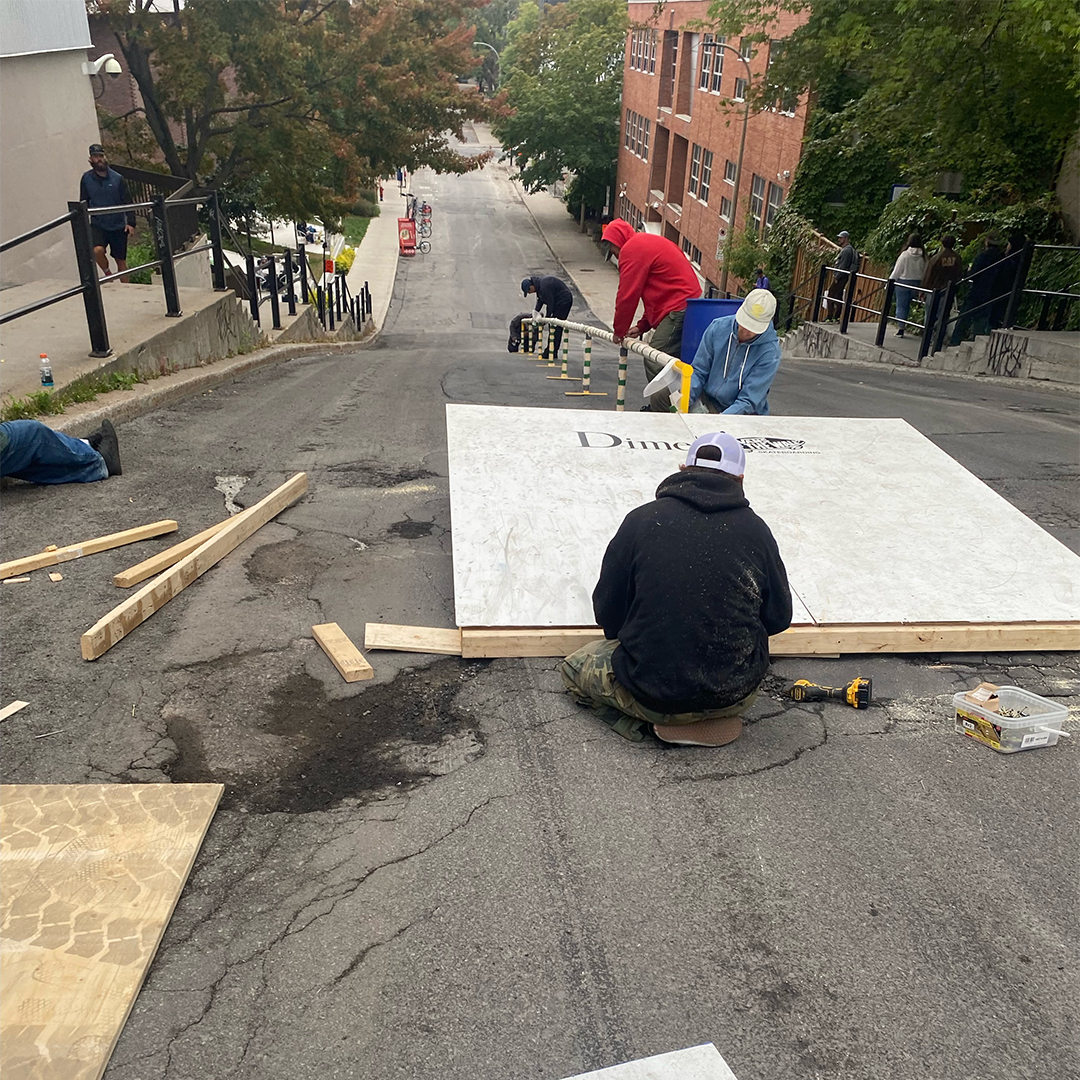
photo: josh clark
What are your connections with Dime and when did you start meeting those guys?
I’ve known Antoine [Asselin], for a long time. We used to do contests and skate together. I grew up skating with them all. They started that whole program and turned it into the actual company. They did their first Glory Challenge in 2015. I got in on that one and then from there, every Dime Glory Challenge since we’ve just kept doing them.
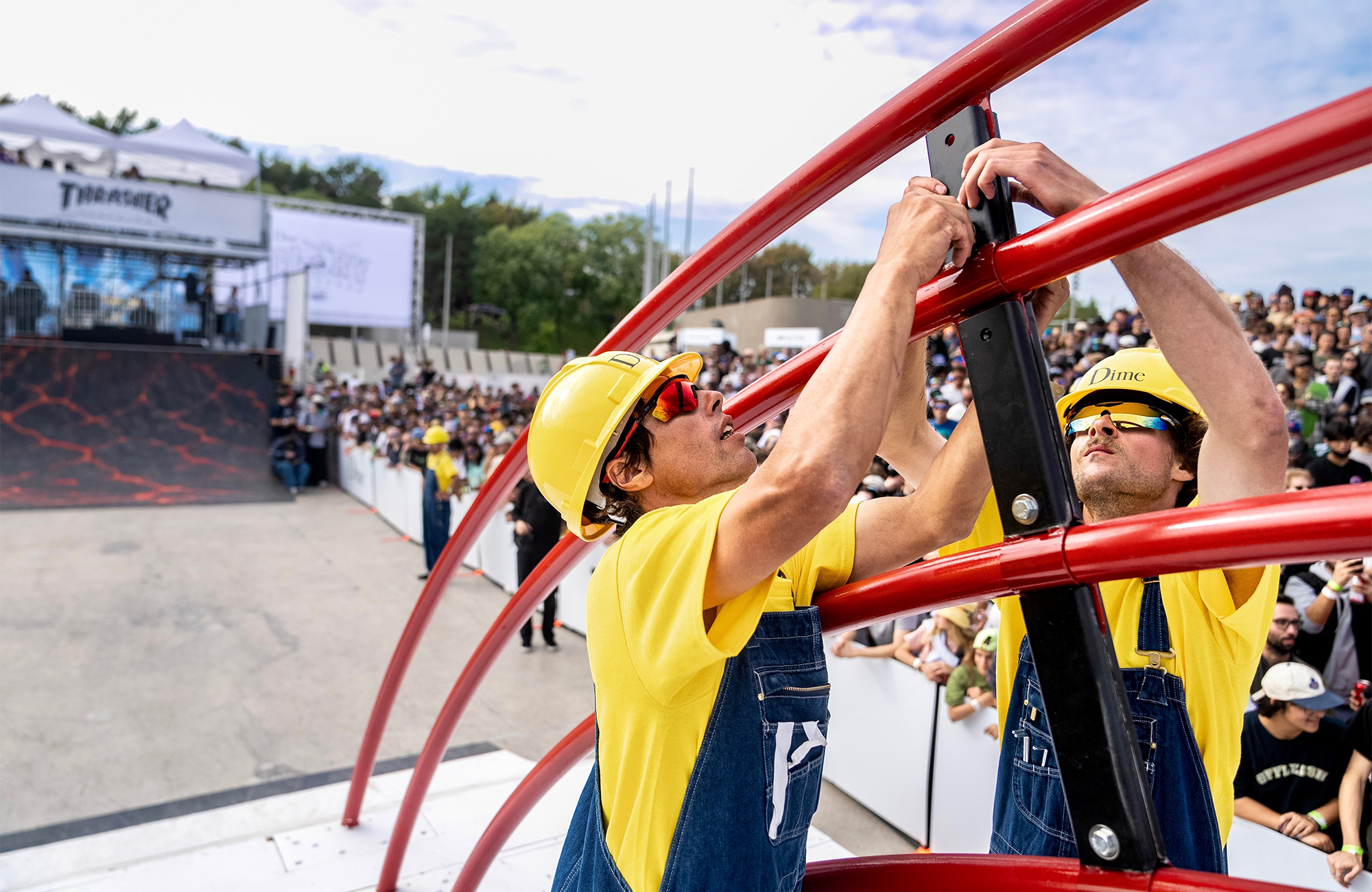
photo: dan mathieu
When does the build process start?
It depends. This year we started three or four months in advance because the ramps were more intricate and we wanted to make sure we were fine-tuning it perfectly.
The company I work for, Stacked, starts way more in advance because obviously, they have a lot of leg work to do with organizing. Josh Clark, one of the co-founders of Stacked, has also been involved with the event since back in 2015. This year, we started actually getting in and completing the ramps, breaking them down, and figuring out what we have to do in May. Like, building the first test, testing it, and slowly picking it apart the whole summer making it better, safer, and trying different things.
When they come up with the ideas, you’re not in that meeting?
Dime and Stacked come up with different things and they narrow it down together. Josh does all the 3D renderings and he’ll send me a preview of the challenges, and we discuss the obstacles and decide what’s feasible or won’t work. Then we have the ones we want to run with and from that point, they hand it to me and go, “Make that giant rainbow rail not vibrate when they skate it. Make sure if someone falls they won’t hurt themselves.” We build them in a warehouse, and then this year because they were a lot bigger, we took them to a local indoor park in Montreal and tested them.
Do you think the Dime guys get high and drunk to come up with the ideas?
[Laughs] I couldn’t tell you. I just sort of wait for the phone call like, “This is what we’re doing.” Cool, let’s do it.



Who is the test crew?
Antoine and all those dudes come in and test it out. They’re priority number one, make sure they’re stoked on everything. Obviously, if I feel like skating it, I’ll skate it. If we’re not beat up and too dead from working on it then I’ll jump on for sure. I’ll skate stage one and two, not stage eight [laughs].
Even Josh [Clark], the project manager of the whole event, will try them out and makes sure it flows and the angles are right. That way we could see what’s not quite working or what we need to fix and make sure they all move correctly.
Everything has to move flawlessly. For the event the obstacles have to be brought in within 10 minutes and taken out within 10 minutes.
“OUR GENERAL RULE WITH DIME IS THAT WE’LL BUILD TO THE MAXIMUM, AND THEN WE’LL BUILD TWO MORE LEVELS…”
Were you prepared to make the rainbow rail bigger for the contest? Or was it too dangerous after a point?
At one point you have to shut it down. And time-wise it’s going to take up a lot of time because everything has to work within the time frame of the event. You also hit a point where someone is doing a 22ft long, 8ft high rainbow rail. It’s like, do we need to see the next one?
Our general rule with Dime is that we’ll build to the maximum, and then we’ll build two more levels because the people who come to skate these things are amazing. There’s always someone out there who is going to push it. Even if we’re like, “Nah, man there’s no chance in hell,” someone always does. To see people go that high or big, compared to what we thought, always makes it a good time.
If we hit a point where nobody can do the sixth stage or whatever, we stop it. Obviously, if nobody can make it they’re not making the next one but at least we’re still ready for the next stage. The longest wall ride, Zered was doing it switch. We were like, “What the hell?” These guys are awesome.
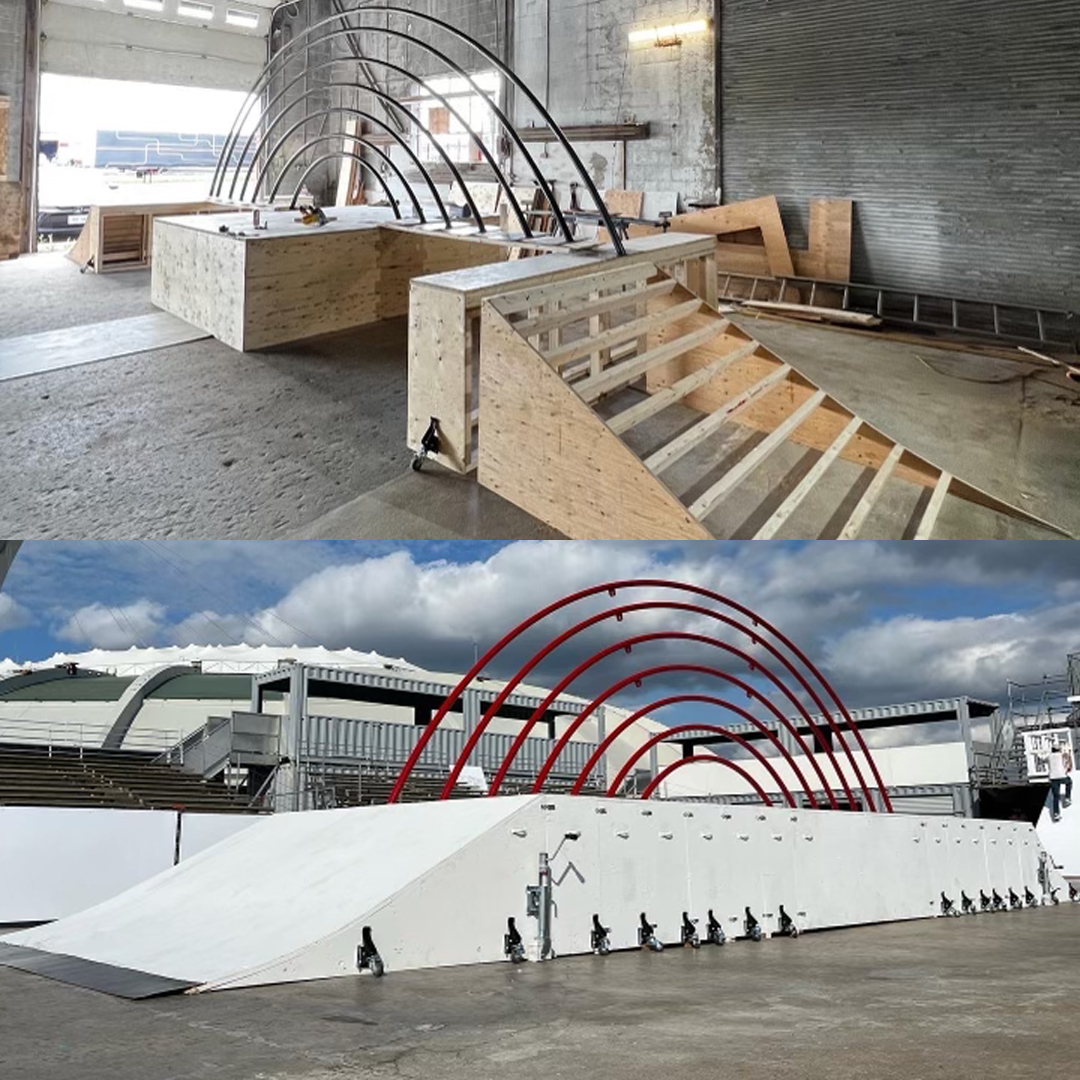
Do you have any tips for skating something as massive as that rainbow rail?
At that point, it’s just full commitment. You can’t go in sketchy or half-ass. Don’t question yourself. If you drop in, fully commit. I don’t think I’d want to step to the biggest rail [laughs]. Even when I was putting the last bracket to limit the vibrations of the rail, I couldn’t even reach the top. I had to monkey climb up there just to put it on. It’s huge!
“EVERYTHING HAS SO MANY MOVING PARTS THAT YOU JUST GET THAT FEAR IN THE BACK OF YOUR THROAT. I LOVE THE CHAOS. I STRIVE FOR THAT CHAOS.”
Were the bump-to-bar dimensions this year based on a real one?
We got an actual bump-to-bar dimension and then we tweaked it for the course. A normal bump-to-bar is a little bit higher and a little bit steeper, but you’re also not coming down a 16-foot roll in to hit it and going 600 mph [laughs]. We had to make a smoother ride in and enough of a kicker where you could still boost off of this thing but not so you’re going to be launched 15 feet over it.
Also, we really look at who is being invited to these things and what they’re going to prefer. I look at that list of people and think like, “Decenzo is coming in,” so we’ll build for them. What are they good at skating, and what would they like to skate?
So who did you have in mind for the bump-to-bar?
Decenzo [laughs]. We had already talked to him beforehand and he was coming to kill that thing. We built it knowing that he was going to skate it, and that everyone else was going to kill it too. It’s a universal thing, but we knew that he was coming with a front three in his head. He already claimed it before he showed up, and then everyone else just drops the hammers.
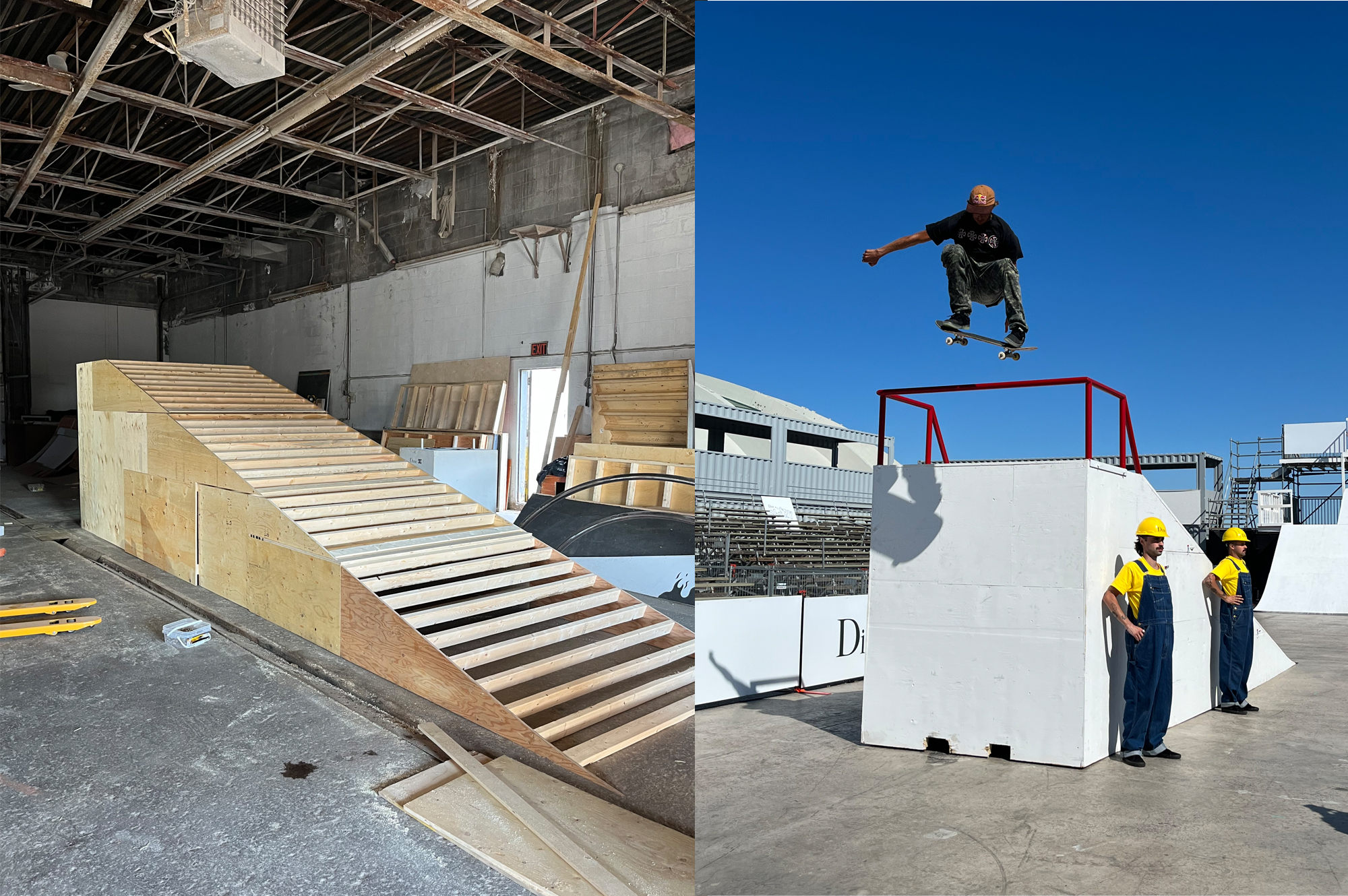
Have you considered remaking famous spots and adding modifications to them, like a Dime LOVE gap kind of thing?
We did the Josh Kasper gap, like the one he tried with the DJ at the bottom. We built that and we actually had a DJ there and everyone was popping tricks over him, so it has been done. I’m sure everything comes from inspiration but I couldn’t really tell you where some of the stuff comes from [laughs].
So you can’t remake the Leap of Faith…
Yeah and then expect all the skaters to start jumping down that? You could mimic it or make a smaller version, but having something actually sized where maybe only one guy is going to do it is not going to be good.
I guess the downside is that if someone does try it they’re going to get hurt.
Yeah, there’s potential for that, so I spend a lot of time fine-tuning, sanding, and making things as flawless as I can because that’s always in the back of my head. I’m sending fellow skaters over these things, so I really do everything I possibly can to make this shit as safe as possible. But you have to realize that anything can happen.
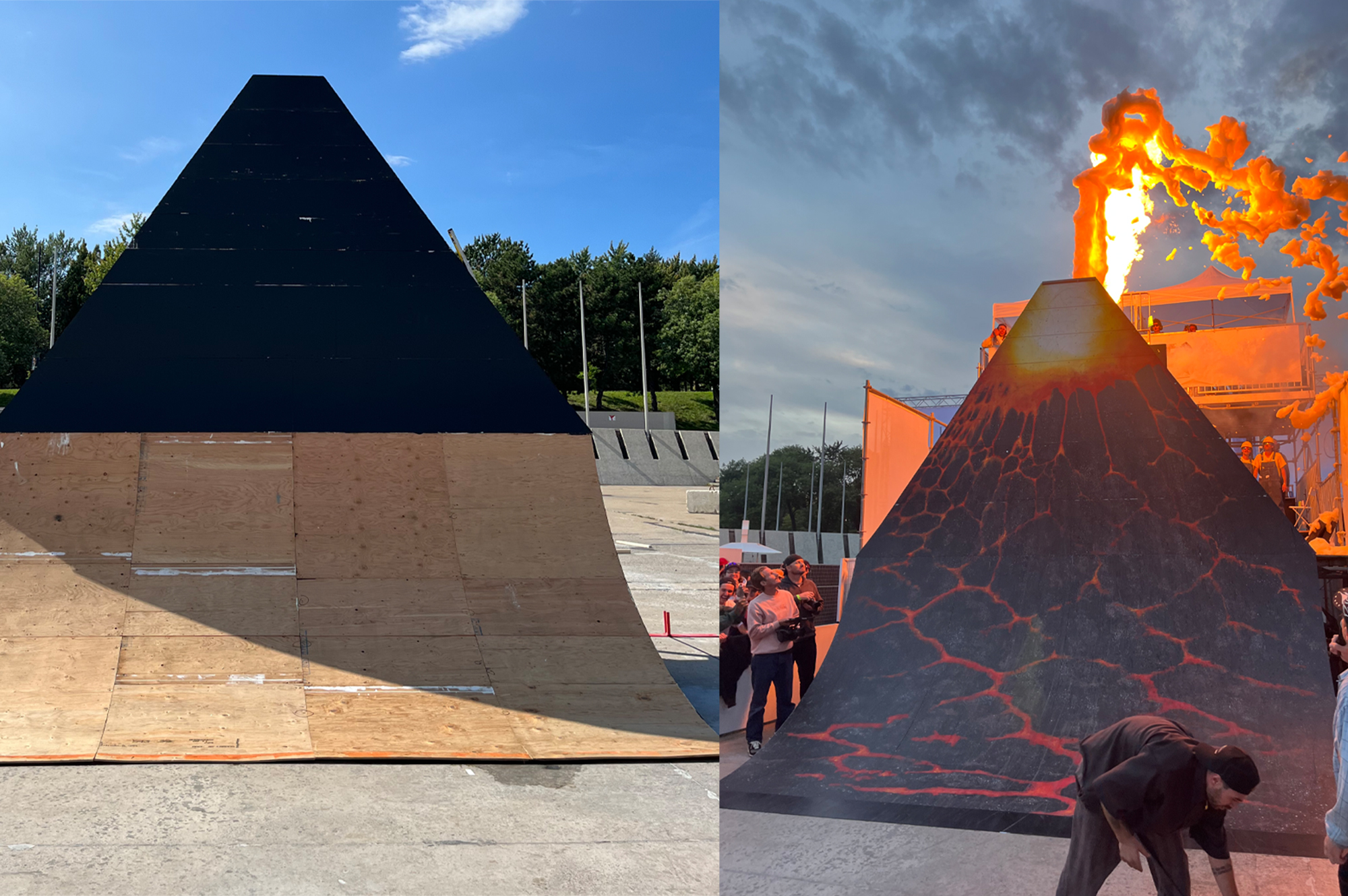
Has anyone ever stepped to something you knew was going to be too dangerous?
This stuff is big, but you’re also bringing in talent who knows their limits, they know when to shut shit down. They’re professionals and they’ll chill when they see that they could possibly get hurt.
Everything we do has to be big. You start out small so everyone could skate and do their thing, then it slowly grows until it is the most ridiculous thing. It’s almost a Guinness World Record type of thing.
“SOME PEOPLE CALL IT A CONTEST BUT IT’S A SKATEBOARD SHOW. IT’S THE GREATEST SKATEBOARD SHOW ON EARTH.”
That’s what it feels like, WWF meets Guinness Book of World Records.
Yeah. It’s a show. Some people call it a contest but it’s a skateboard show. It’s the greatest skateboard show on Earth [laughs]. Like there was the game of SKATE with the whole montage of Wade Desarmo coming down in the helicopter and driving a Lambo. It’s a show where the best skateboarders perform and destroy these things.
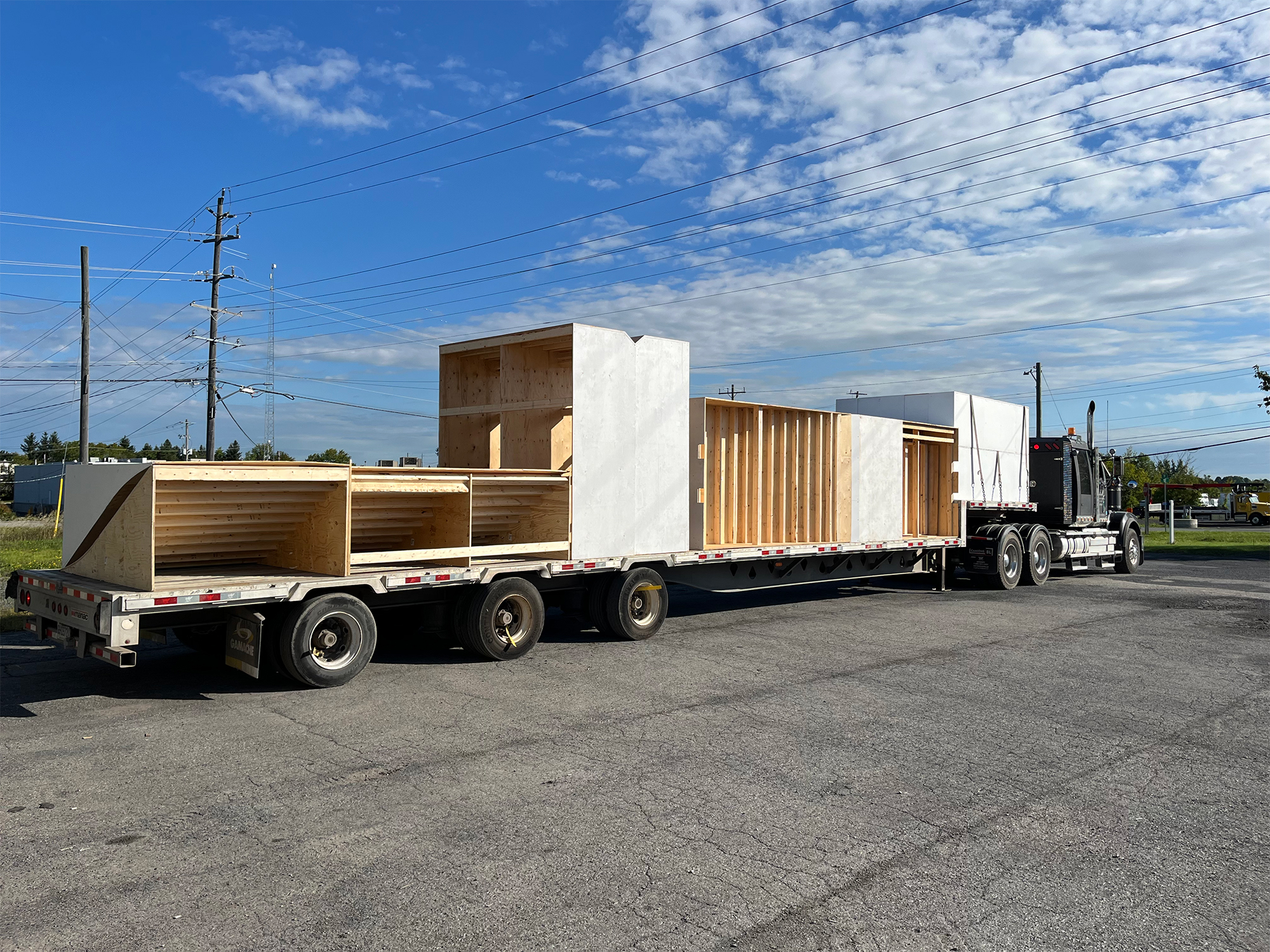
What haven’t you done? I guess there hasn’t been a manny challenge yet. Could you see something like that?
The point of a lot of the obstacles is like one trick. The way it’s done is so skaters can see their favorite skaters do the craziest trick on one of these obstacles, but it’s also not to get too crazy with it, so the average person who watches it can also be stoked and can understand what’s going on.
Like with the highest drop in, Zered did switch, and every skater in that room is shitting their pants like, “This is amazing!” but the average person is like, “Eh…” because they don’t know the difference. So if you do something that gets too techy, normal people won’t get it.
How much does one of those rails rainbow cost?
Some of the stuff I don’t inquire about. I just focus on the build. I let them do what they need to do and I do what I need to do. I tell them the materials and all that, but I just let that stuff get figured out on their side.
How much would you say the whole show costs to produce? $1 million?
I couldn’t tell you.
Just fart if it’s over $1 million.
[Laughs] I couldn’t tell you. I know wood this year was triple the price, but when it comes to containers and bleachers and venues and all that sort of stuff, I don’t know.
Even the downhill rail, we had to get a permit because the entire road had to be shut down.
It was supposed to be a dry day, then as soon as we realized it was going to rain we were like, “Dope. Let’s just Pat Duffy this thing. Let’s put it up just to see if anyone would skate it. There’s enough talent here and people are going to jump on it.” Lo and behold people started jumping on it. People were sliding everywhere and you could see that water kickup behind them. Just surviving the hill was a game in itself. The water was flowing do the hill like a river.
Interview by: Ian Michna
Photos by: Casey McDonald, Dan Mathieu, Josh Clark
Check out Casey’s brand La Vie Skateboards here
Share this with a union member on Facebook
Report this as not OSHA approved on Instagram and Twitter
If you like fun and intelligent skateboarding related articles, be sure to visit and bookmark: Jenkem Mag
If you are not yet a BRA Retail Member, you can easily opt in to either Regular (no cost) or Distinguished ($100/yr.) Membership via this super simple join form

